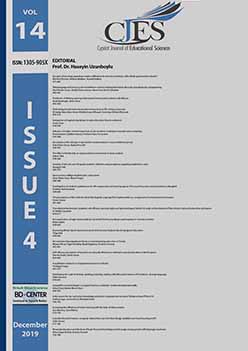etalanguage and sensory sub-modalities in mental training techniques through neurolinguistic programming
etalanguage and sensory sub-modalities in mental training techniques through neurolinguistic programming
Author(s): Vlad Teodor Grosu, Emilia Florina Grosu, Emil Ciufudean, Hanna VariSubject(s): Education, Psycholinguistics, Neuropsychology, ICT Information and Communications Technologies
Published by: Birlesik Dunya Yenilik Arastirma ve Yayincilik Merkezi
Keywords: Idiomatic representation; neurolinguistic programming; sensations; sensitive sub-modality; mental training;
Summary/Abstract: Introduction and theme actuality: this study is part of a larger work, which involves increasing sporting performance by applying mental training techniques, special techniques of neurolinguistic programming (NLP). Purpose of study and hypothesis: if ideomotor representations of athletes are completed with multiple sensations of all sensory sub-modalities such as visual, auditory, kinaesthetic, olfactory and gustatory, the possibility of applying the techniques of NLP will have more effective results. We have studied the relationship between sensory sub-modalities, in accordance with the Bandler and Thomson (2012) and application of Jacobson (2011). Methods and material: two records were made by using two tests, test 1 and test 2, on master students of the 'Babes-Bolyai' University Cluj-Napoca, from the Faculty of Physical Education and Sport. The statistical indicators were calculated on elements of descriptive statistics and the data are presented using indicators of centrality, location and distribution. Statistical analysis of the non-parametric Wilcoxon test was used for sample pairs. Discussions and findings: to pinpoint the correlation between the two variables, we used the Spearman rank correlation coefficient (Ï). Statistical analysis was performed using the correlation coefficients of Colton's rule. No statistically significant differences were found (p > 0.05) in the statistical analysis because of the short timeframe, but there are many good and very good correlations at both tests, between the values of the items studied. Conclusions and recommendations: we want to continue with this study because the time difference between T1 and T2 was 3 months and we want to extend this study to a minimum of 6 months. All sensory sub-modalities are particularly important in achieving ideomotor representations underlying mental training.
Journal: Kıbrıslı Eğitim Bilimleri Dergisi
- Issue Year: 14/2019
- Issue No: 4
- Page Range: 482-491
- Page Count: 10
- Language: English

